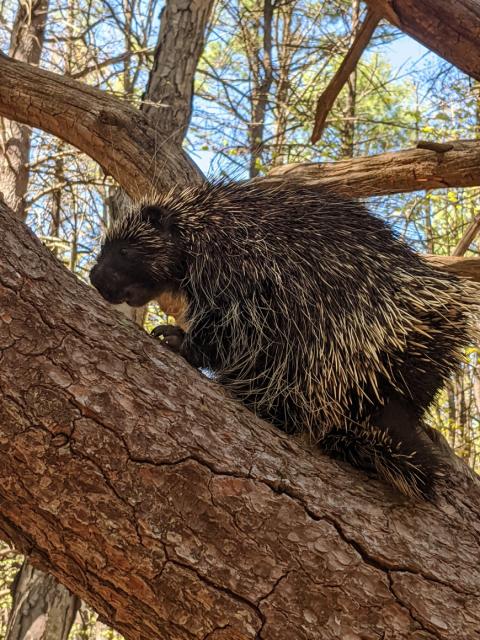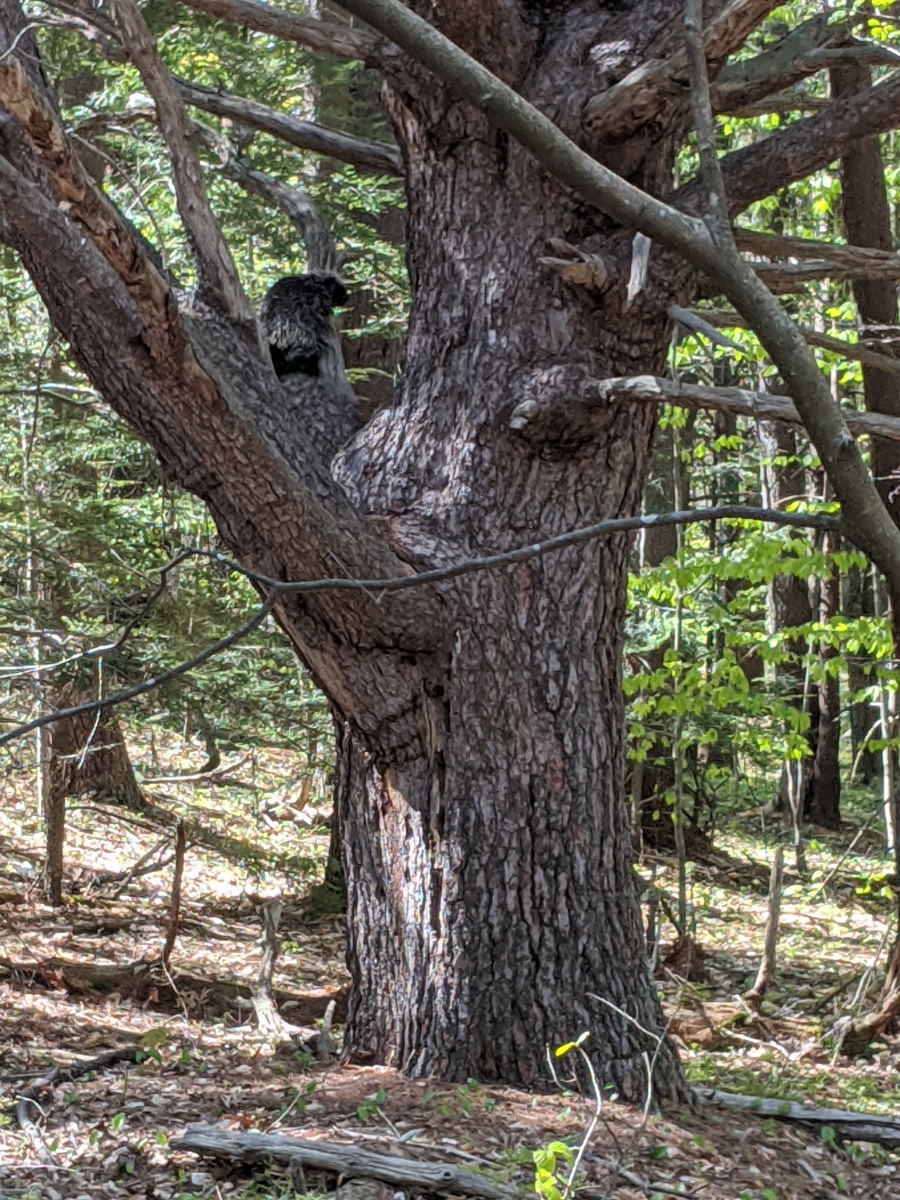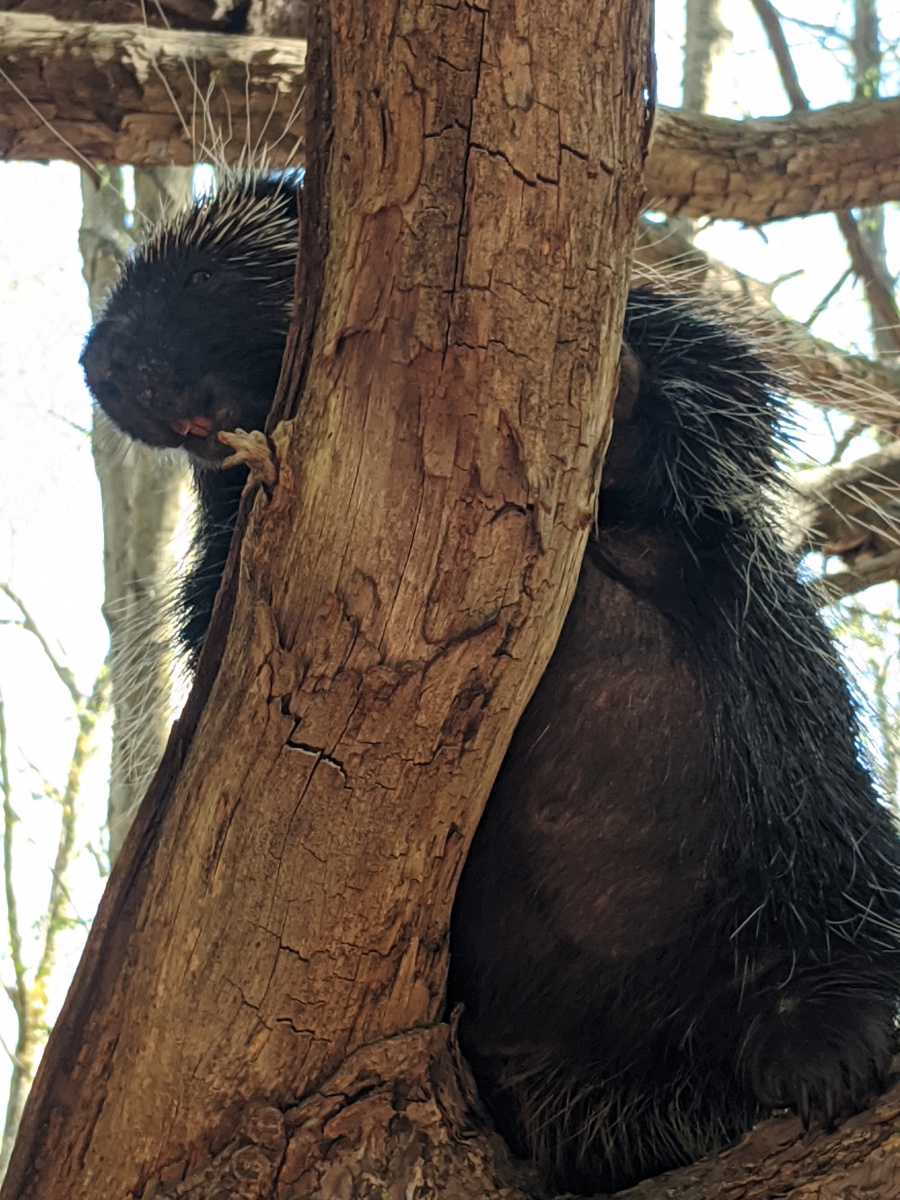The Porcupine and the Wolf Tree

I found a friend recently while out doing boundary work in the Hillsborough County Tree Farm. The North American Porcupine (Erithizon dorsatum) is named after an old French word porcespin, which translates to “thorn pig”. The porcupine is a large member of the order Rodentia or rodents, with the unique adaptation of having up to 30,000 quills on its body.
Contrary to popular belief, porcupines do not shoot their quills. They take up a defensive posture if threatened with their head down and the quills on their back and rump sticking out. The hollow quills will dislodge easily if contacted. Sometimes they will chatter their teeth too as a defensive strategy. If the quills get into a predator, they will slowly penetrate deeper and deeper due to the hundreds of minute overlapping barbules near the tip that expand when stuck in warm tissue. This can even be fatal if they penetrate deep enough to hit an organ!

Porcupines are vegetarians with large claws which aid them in climbing to eat bark, buds, and foliage from a variety of trees. During the summer they shift from a winter diet of bark, needles, and buds of mostly hemlock in the northeast, and will feed on dandelions, grasses, clover and leaves among other things. Sometimes they climb on limbs that cannot support their weight and falling out of trees can cause mortality. Porcupines can live for up to 25 years making them the longest living member of the rodents. The number one cause of porcupine mortality each year is vehicles so brake for porcespins if you can. Porcupines do not flee like other animals when encountered in the wild, instead they just sit still in the tree, waddle off at a slow pace, or take up a defensive posture if threatened. Even with their protective quills, they do get preyed upon by some animals. Fisher are well adapted to surrounding porcupines and attacking their face repeatedly where there are no quills until the porcupine is helpless. Other animals in New Hampshire that might prey on porcupine include bobcat, coyote, and great horned owls.
While they are typically nocturnal, they are sometimes spotted during the day. Over the past twenty years or so, I have found many a porcupine in an old pasture tree like the one pictured, whether they had a den in the tree or not. Porcupines will den in hollow trees, rock crevices, hollow logs or the dens of other animals. The most obvious sign of a den is a large scat pile at the entrance. Old pasture trees like the one pictured are distinct in the forest by their wide spreading crowns as opposed to the more vertical trees around them that had to compete for sunlight against one another, forcing them to race upward to achieve spatial dominance. In an old pasture these trees were not under competitive pressure from crowding, so they spread out to maximize their photosynthetic capacity. Often times these trees are called wolf trees. Like wolves, they are dominant in the landscape and often stand alone. Maybe porcupines like them for the simple fact that they are easier to climb and provide a degree of safety during the day?

When thinking about your woodlot stewardship, a major focus is often trying to grow the best quality trees possible to maximize future profits from your investment. This goal while important, is often weighted against other goals such as maximizing wildlife benefits, protecting soil and water quality, improving aesthetics, and increasing opportunities for recreation and wildlife viewing to name a few. While these old wolf trees have little value from a financial standpoint, they have a high value when it comes to structure for wildlife, and overall aesthetics in the forest. I know they are always a point of fascination for me when I’m out and about in the woods. If we asked the porcupine to place a value on the wolf tree or the large straight branchless pine loaded with high quality board feet of clear lumber, I bet you could guess what his or her answer would be!
References:
Wessels, Tom. Reading the Forested Landscape: A Natural History of New England. The Countryman Press, 1999.
Stokes, Donald and Lillian. Stokes Nature Guides: A Guide to Animal Tracking and Behavior. Little, Brown and Company, 1986.

